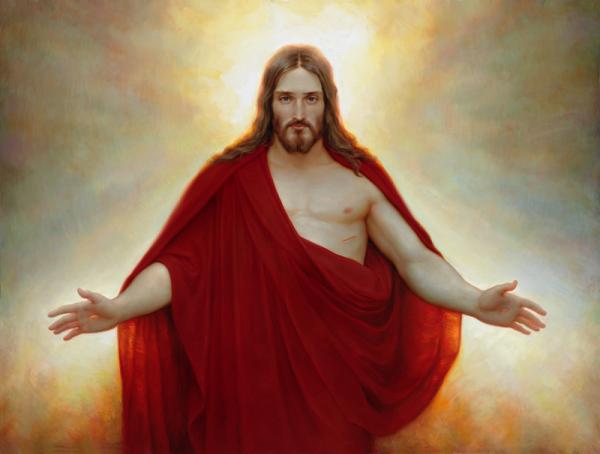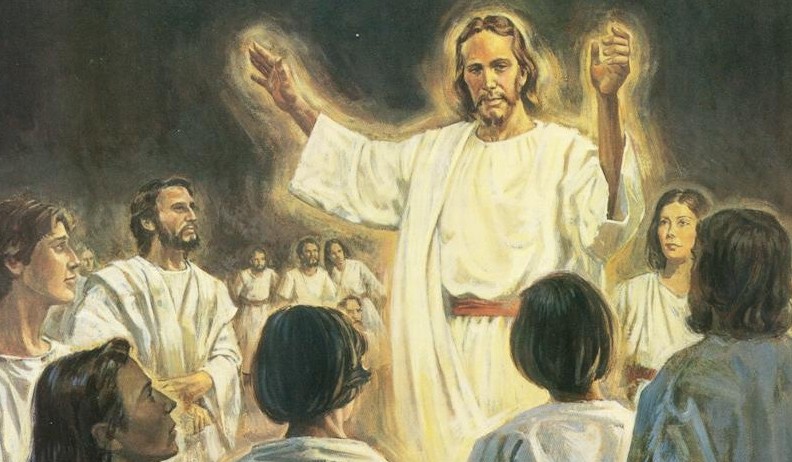Question
Gramps,
In Sunday School the question was asked why Jesus would return in a robe of red and not white. No one had the exact answer. I found scriptures about this but still do not understand. Can you explain this? Thank You!
Nancy
Answer
Dear Nancy,
When contemplating the Second Coming of Jesus Christ, images of divine glory and purity often come to mind—white robes, radiant light, and peaceful dominion. However, specific scriptures within The Church of Jesus Christ of Latter-day Saints present a compelling contrast: Christ will return adorned in a robe of red. This intriguing detail invites deeper exploration into its symbolic meaning and prophetic significance.
The portrayal of Jesus Christ’s return is a central theme in Christian eschatology, encompassing varied imagery and interpretations across different denominations. Within The Church of Jesus Christ of Latter-day Saints, unique scriptural references highlight that Christ will come in a robe of red rather than white, a detail that may seem perplexing at first glance. Understanding this symbolism requires delving into biblical texts, prophetic teachings, and theological interpretations that shed light on the multifaceted nature of Christ’s Second Coming.
Red is a color deeply embedded in biblical symbolism, often representing aspects such as war, judgment, and sacrifice. Its association with blood ties it to both life and death, war and purification.
In the Book of Revelation, red is frequently depicted in the context of war and divine judgment. For instance, Revelation 6:4 describes the rider on the red horse as one who takes peace from the earth, symbolizing conflict and upheaval. Similarly, the prophet Nahum 2:3 associates the color red with the impending judgment upon Nineveh, emphasizing the severity and intensity of divine retribution.
Doctrine and Covenants 133:48 provides a specific reference to Christ’s apparel upon His return: “the Lord shall be red in his apparel, and his garments like him that treadeth in the wine-vat.” This vivid imagery aligns with the portrayal of Christ as a Warrior King—a figure of both judgment and deliverance. The red garment symbolizes His role in executing divine justice and establishing righteous order.
The depiction of Jesus Christ in white during His first coming and in red upon His return underscores different aspects of His mission and character.
During His first advent, Christ is often described wearing white garments, symbolizing purity, holiness, and peace. This imagery aligns with His ministry of love, teaching, and healing, emphasizing reconciliation and the establishment of His kingdom through grace.
In contrast, the red robe signifies a robust aspect of Christ’s mission—bringing justice and fulfilling covenant promises. While white represents the peaceful aspects of His first coming, red embodies the active, sometimes confrontational role Christ plays in establishing everlasting righteousness and addressing iniquity.
Understanding the theological significance of Christ’s red robe involves exploring themes of mortality, sacrifice, and the ultimate triumph of good over evil.
The color red is intrinsically linked to blood, a symbol of both life and sacrifice. Christ’s red garment may reflect His suffering and the blood He shed, which is foundational to the doctrines of atonement and redemption. It serves as a reminder of the cost of salvation and the lengths to which Christ will go to achieve humanity’s reconciliation with God.
Red also signifies victory and triumph. In biblical narratives, overcoming adversaries is often depicted with bold and striking imagery. Christ’s red robe underscores His decisive role in defeating evil, establishing His eternal kingdom, and ensuring the fulfillment of divine prophecy.
Various scriptures across the Bible and The Church’s canon corroborate the depiction of Christ in red upon His return.
As previously mentioned, Doctrine and Covenants 133:48 explicitly describes the Lord’s apparel as red, signifying His role in judgment and the establishment of His eternal rule.
Isaiah 11:4 portrays the Messiah as one who will “strike the earth with the rod of his mouth,” emphasizing His authority and capacity to enforce divine will. This warrior aspect complements the imagery of a red robe, reinforcing the theme of righteous judgment.
Revelation provides a vivid portrayal of divine judgment, with imagery that aligns with the red apparel. The depiction of Christ as a conquering King in Revelation 19:13, dressed in blood-red garments, encapsulates the dual nature of His mission—bringing both salvation and judgment.
The portrayal of Jesus Christ in a red robe upon His return is rich with symbolic meaning, encapsulating themes of justice, sacrifice, and divine authority. While white garments signify purity and peace associated with His first coming, red attire emphasizes His role as a righteous Judge and Warrior King in the Second Coming. Understanding this distinction deepens the appreciation of Christ’s multifaceted mission and the profound theological narratives that underpin these scriptural revelations. As believers anticipate His return, recognizing the significance of His red apparel serves as a powerful reminder of the balance between mercy and judgment that Christ embodies.
Gramps







